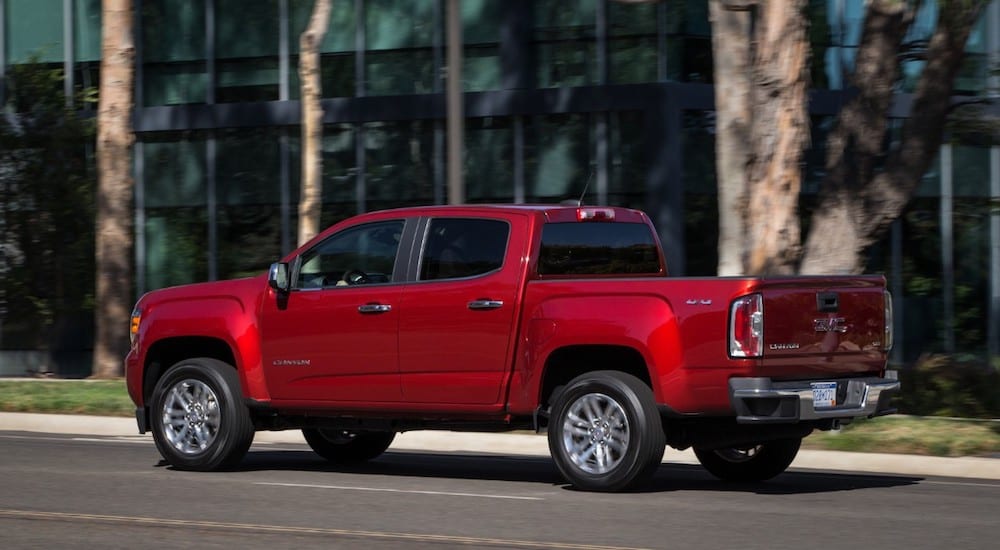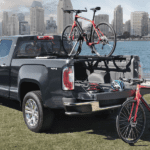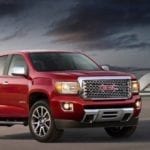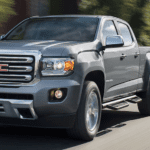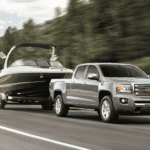Statistically speaking, you could make your way through (pretty much) any summary of truck sales (across nearly every demographic) and you’d see similar trends. The apex is likely to be the centennial trinity of Ford, Chevy and RAM, with the remainder of the proverbial pie being ever redistributed among such upstart offerings from Toyota, Nissan (and yes, even Honda). But, hold up…we’re missing someone aren’t we? Nestled somewhere in the great divide spelled out above, lies GMC. Of course, in the landscape of truck-makers, it’s all too easy to overlook GMC trucks (or even write them off as rebadged Chevy offerings) but is that really deserved? Loyalists will swear by their Canyon or Sierra, but is GMC doing everything they should to highlight the strength of value proposition offered by their lineup?
Far be it from us to cast aspersions on their marketing strategies, but then again, far be it from us to sit around and do nothing about such injustice. That said, let’s take a closer look at the GMC truck lineup and show a little appreciation to a lineup that, historically, feels somewhat under-appreciated.
Crossing the Canyon
Priced to start around $22,095 MSRP the Canyon is available in either Rear -or- 4 Wheel Drive, and served up with a trifecta of cab and bed configurations. This includes (i) the pairing of Extended Cab with Long (74-in) Bed (ii) Crew Cab with Short (61.70-in) Bed, and (iii) Crew Cab with Long Box.
Depending on the configuration selected, powertrain options include:
2.5-liter inline four-cylinder DI DOHC engine, with variable valve-timing, wrangling 200 hp and 191 lb-ft of torque. Offering 26 mpg (highway, 20 city) this configuration has a starting max payload of 1,463 LBS and a towing capacity of up to 3,500 LBS.
The 3.6-liter V6 DI DOHC also features VVT to help optimize power and efficiency, but pumps up its utility numbers to 308 hp and 275 lb-ft of torque. Fuel economy is slightly more modest at 25 (highway, 18 city) with payload starting at 1,599 LBS and towing at 7,000 LBS.
Then, of course, the Duramax 2.8-liter TurboDiesel, an inline four-cylinder with dual overhead camshafts, which delivers 181 hp and 396 lb-ft of torque. Serving up 28 mph (highway, 20 city) this version of the Canyon delivers a payload starting at 1,462 LBS and can tow up to 7,600 LBS.
Some might view the Canyon simply as a rebadged Colorado, but the availability of a diesel engine helps to set it apart from midsize offerings and the availability of a Denali trim adds to its appeal with a level of refinement and luxury that’s (otherwise) hard to come by. Smooth riding, with confident towing and hauling capability, the Canyon is easy to please and capable of meeting the vast majority of demands one would have in any pickup.
Looking Out Over the Sierra
And just as naysayers might write the Canyon off as a reissued Colorado, the Sierra’s “placement” as corporate cousin of the Silverado leaves it open to similar criticism. That said, it sets itself apart in many of the same ways as the Canyon, awhile the range of options available in the Sierra make it even more compelling.
Look closely at the 1500 and you’ll find a unique, chiseled design amongst its exclusive features. Add in its adaptive suspension, the resilience of its carbon-fiber cargo bed and versatility of its multi-purpose split-folding tailgate and the Sierra’s pretty easy to like.
And for heavy-duty loyalists, it’s hard not to love the 6.6-liter Duramax diesel that rests under the hood of the HD. Combined with Stabilitrak, the availability of trailering packages and a 23,300 LB max trailering capacity makes it a worthwhile consideration.
The 1500 Limited sports the unique combination of double cab and standard bed, lending the Sierra a distinctive aesthetic that sets it apart from its stablemates. And if “looks” are what you’re into, opting for the Elevation Edition lends the Sierra a “bold, monochromatic look” that compliments the rests of its sport-inspired design.
And the Next-Gen Sierra steps up, sporting newly-enhanced proportions and the industry-first six-function tailgate. And speaking of enhancement, GMC steps up to hi-po’d competitors with the AT4. Powered by a 6.2-liter V8, the 420 hp beast tows up to 9,400 LBS while sitting atop a 2-inch factory installed lift, making an immediate impression with its intimidating stance.
No matter which variation of the Sierra suits you best, a closer look eliminates any doubt that it is a truck that stands on its own four wheels and not in the shadow of some corporate cousin.
The “Denali” Factor
And, of course, GMC’s inclusion of the Denali level has empowered their lineup to feel more elite for the better part of twenty years. By enhancing both the exterior and interior aesthetic, it takes an already well-designed truck or SUV and upgrades it to the point where it’s fundamentally competitive with some of the more recognizable luxury brands like Cadillac or Lincoln.
And if the idea of a luxury-inspired pickup seemed laughable in the past, the fact that truck builds are now exceeding the $100K mark is the only proof that we need that GMC might have been ahead of the times introducing the Denali upgrade as an option.
Is a GMC Truck the Right Choice For You?
It’s a personal choice, isn’t it? But whether making the change to GMC represents a complete shift of gears, or simply a quick leap over from Chevy, it seems that more people than ever are considering GMC as a viable option. Aesthetically pleasing, while distinctively on-brand, it comes down to what you want out of your truck. Performance-wise, there’s no shortage of capabilities for those in need of reliability and work-readiness. And yet, GMC’s signature sense of refinement and luxury-inspired character add a whole other level of appeal. What are your thoughts on either the Canyon or the Sierra? We want to know.
